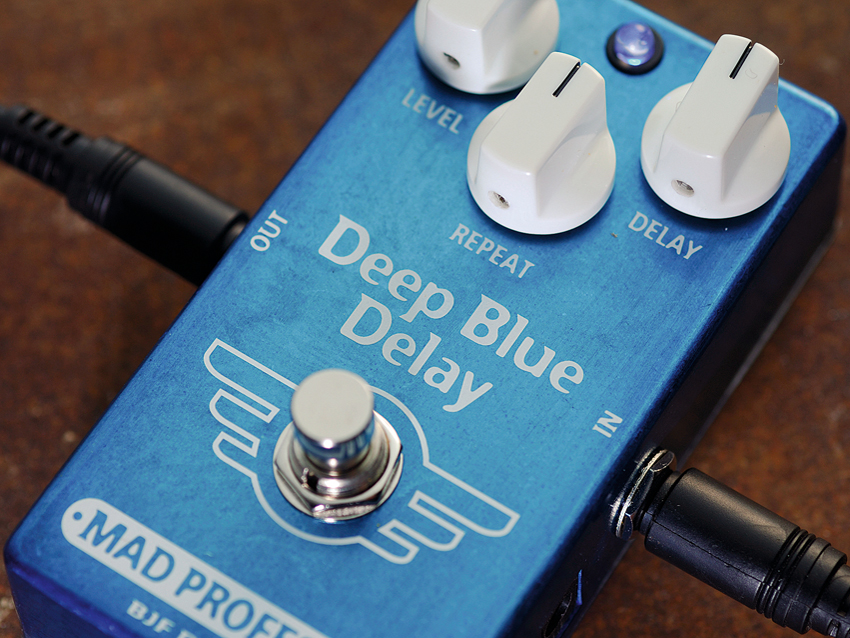MusicRadar Verdict
This isn't just another stompbox. Mad Professor has put a lot of thought into its function and tone. Thanks to its more affordable price, even more of us can feel the love.
Pros
- +
Old-school simplicity. Killer tones.
Cons
- -
Still a little pricey for some?
MusicRadar's got your back

Deep Blue Delay

Deep Blue Delay
You may remember that we've previously had a look at a couple of Mad Professor effects pedals: the Mellow Yellow Tremelo and the Fire Red Fuzz.
"Avoiding cliches can be tough when using a delay, but the Deep Blue inspires creativity."
Suitably impressed, we raved about the features and, but choked a little at price tags that started from. They were hand-wired, but still…
Well aware that the only grumbles is has received regarding its pedals were sparked by the prices, the Finnish company is now offering a number of its stompboxes in a PCB (printed circuit board) format, with the pots, switch and jack sockets mounted on the board.
The use of PCBs has brought the price of the pedals down by a fair margin. That's great, but has tweaking the spec impacted on the brand's hard-earned reputation for great tone?
Build
Mad Professor's delay pedal has three controls: level, delay and repeat. But level isn't a volume control - it regulates the ratio of the clean guitar signal to the amount of delay effect.
The delay control offers a sweep of delay times from 25 milliseconds all the way up to 450 milliseconds. The repeat control is exactly what you'd imagine it to be, and it runs from a single regeneration to infinite feedback.
Mad Professor has designed the Deep Blue to replicate the warm sounds of classic tape- based echo units of the '60s. To enhance the old-school vibe, there are no provisions for noise reduction.
Want all the hottest music and gear news, reviews, deals, features and more, direct to your inbox? Sign up here.
The intriguing part of all this is that the Deep Blue is actually a digital pedal, although the direct signal path is analogue.
Sounds
Plugging in, we get the vintage thing right away. Inspired, we decide to run a Sun Studio-style rockabilly test. The fact that we nail the sound we're looking for so quickly gives you an idea of how user friendly the Deep Blue Delay is.
If you play rockabilly or roots-inspired rock in the vein of Creedence Clearwater Revival, you'll love the authentic vintage warmth of this pedal.
Avoiding clichés can be tough when using a delay, but the Deep Blue inspires creativity. Setting the pedal for a single repeat adds some cool ambience to high gain rhythm and lead parts that you'll miss with the pedal switched off.
Mad Professor will still make you a hand-wired version of all these pedals if you wish. The thing is, based on the quality of the sounds on offer from these lower-cost factory models, we don't think you need to splash out all that extra lolly.
We'd be surprised if many people could really hear the difference between the hand-wired and circuit board jobs anyway. Utilising a PCB construction hasn't diluted any of the wow factor that you equate with Mad Professor pedals.